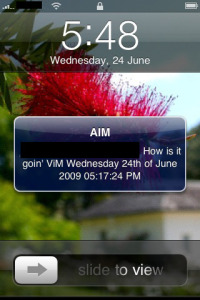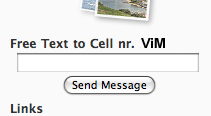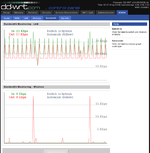Fun with iPhone push
 Wednesday, June 24, 2009 at 7:57AM
Wednesday, June 24, 2009 at 7:57AM  Yesterday the AIM messenger on the iPhone was launched with push service. When you install and run the app, it will ask you if you want push enabled. Push will keep a persistent connection with the APNS (Apple Push Notification Servers) of Apple. Any app that uses push, will use these servers to deliver messages to your phone.
Yesterday the AIM messenger on the iPhone was launched with push service. When you install and run the app, it will ask you if you want push enabled. Push will keep a persistent connection with the APNS (Apple Push Notification Servers) of Apple. Any app that uses push, will use these servers to deliver messages to your phone.
 The fun thing is that you don't have to run the app itself anymore to receive messages. You can 'turn off' the iPhone and still get a notification for the app on which you have enabled push on. So I was wondering what you could do with push and came up with an cheap web2iphone script that i've put on my personal blog. Members can post a message in a box and it will 'instantly' (within a couple of seconds) be delivered to my iPhone. You will need a iPhone with a dataplan to get this working. Switching off the iPhone will set it to use the gprs or 3G connection of the phone. I tested it overnight and the push app seemed to use about 15kb per 12 hours.
The fun thing is that you don't have to run the app itself anymore to receive messages. You can 'turn off' the iPhone and still get a notification for the app on which you have enabled push on. So I was wondering what you could do with push and came up with an cheap web2iphone script that i've put on my personal blog. Members can post a message in a box and it will 'instantly' (within a couple of seconds) be delivered to my iPhone. You will need a iPhone with a dataplan to get this working. Switching off the iPhone will set it to use the gprs or 3G connection of the phone. I tested it overnight and the push app seemed to use about 15kb per 12 hours.
 ViM
ViM 



